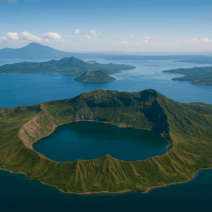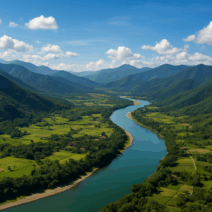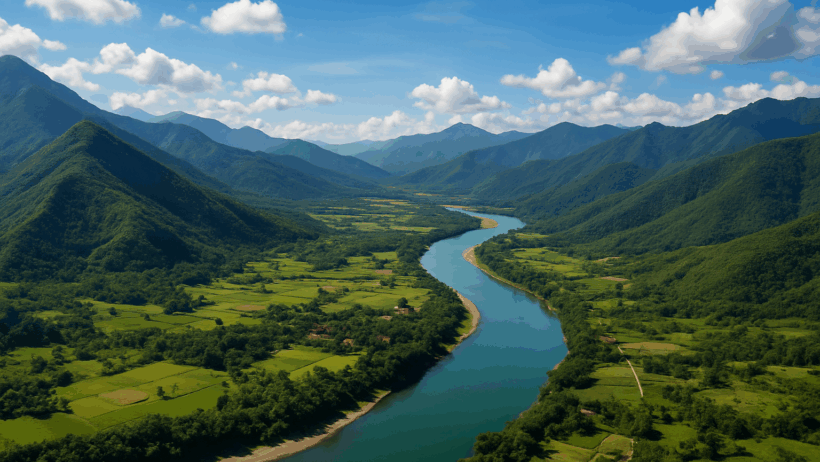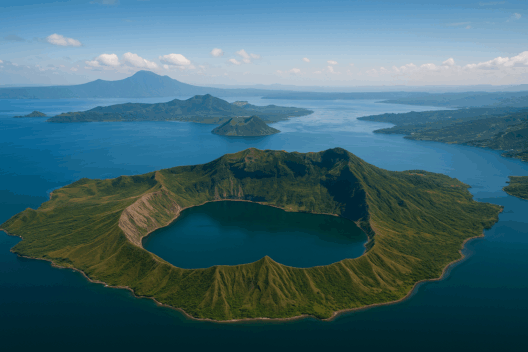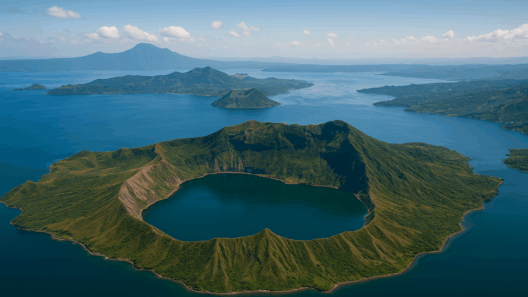QUICK SUMMARY
A sweeping travel guide to Cagayan Valley’s dramatic landscapes, ancient caves, mighty rivers, and rich cultural heritage across Cagayan, Isabela, Nueva Vizcaya, Quirino, and Batanes.
Cagayan Valley, the vast northeastern frontier of Luzon, is a region shaped by mountain ranges, fertile plains, and some of the most powerful rivers in the Philippines. Bordered by the Sierra Madre to the east and the Cordilleras to the west, the valley unfolds as a dramatic landscape of rolling fields, deep forests, cave systems, waterfalls, heritage towns, and winding waterways.
Known as Region II, Cagayan Valley comprises the provinces of Cagayan, Isabela, Quirino, Nueva Vizcaya, and Batanes (administratively governed as part of the region). Together, these provinces create a destination that blends adventure, culture, and nature in one vast and unforgettable territory.
The Gateway: Tuguegarao City
Tuguegarao, the regional capital, is a bustling transportation hub known for its local cuisine, historical sites, and access to natural wonders. Travelers often use Tuguegarao as a base before venturing deeper into the region.
Must-see spots include:
- St. Peter and Paul Metropolitan Cathedral
- Callao Cave in nearby Peñablanca
- Buntun Bridge, one of the longest bridges in the Philippines
Tuguegarao is also famous for its culinary icons like pancit batil patong and longganisa, offering travelers a warm, flavorful welcome to the region.
The Lush Province of Cagayan
Cagayan Province is known for its rugged coastlines, white-sand beaches, and grand historical landmarks. Among its most remarkable attractions is Palaui Island, celebrated for its untouched beauty, hiking trails, and dramatic coastal cliffs. Its serene environment and clear waters make it a paradise for nature lovers.
The Cagayan River, the longest river in the Philippines, flows through the heart of the valley. Its wide waters support fishing communities, boat tours, and agricultural lands that thrive along its banks.
Several heritage churches, including the Basilica of Our Lady of Piat, add cultural depth to the province, making it both a pilgrimage site and a historical destination.
The Agricultural Powerhouse: Isabela
Isabela, one of the country’s top corn and rice producers, is a dynamic mix of agriculture and adventure. Its vast lands and countryside charm give it a peaceful yet expansive character.
Key attractions include:
- Ilagan Japanese Tunnel, a World War II landmark
- Magat Dam, one of Southeast Asia’s largest dams
- Dinapigue’s coastal wonders, perfect for off-grid travel
Isabela is also home to Iguig Calvary Hills, known for its life-size Stations of the Cross set against rolling landscapes.
Quirino: The Quiet Adventure Province
Quirino is perhaps the most underrated destination in Cagayan Valley. With its quiet towns, clear rivers, and green landscapes, it offers relaxing and adventure-filled activities without the crowds.
Highlights include:
- Siitan River, famous for canoeing and scenic limestone gorges
- Nagbukel Caves, for spelunking and exploration
- Aglipay Caves, a complex of chambers and caverns
Known as the “Forest Heartland of Cagayan Valley,” Quirino is ideal for nature lovers and travelers seeking untouched beauty.
Nueva Vizcaya: Mountains, Waterfalls, and Ethnic Heritage
Nueva Vizcaya showcases mountain ranges, waterfalls, and vast eco-parks perfect for outdoor enthusiasts. It is one of the cleanest and most peaceful provinces in the region, with a culturally diverse population including the Ifugao, Isinai, and Gaddang communities.
Top attractions include:
- Capisaan Cave System, the country’s second-longest
- Dupax del Sur Church, a National Cultural Treasure
- Mount Palali, a popular spot for hikers
Fresh produce from its farms and markets adds to the province’s charm, with citrus fruits being a signature product.
Batanes: The Jewel of the North
Though geographically distant from mainland Luzon, Batanes forms part of the Cagayan Valley region. Known for its rolling landscapes, stone houses, lighthouses, and unique Ivatan culture, Batanes is a bucket-list destination for Filipino and international travelers alike.
Its breathtaking scenery and serene atmosphere make it one of the Philippines’ most prized and protected travel gems.
Rich Culture and Living Traditions
Cagayan Valley is home to various indigenous groups including the Ibanag, Itawes, Gaddang, Yogad, Dumagat, and Ivatan. Their languages, rituals, and craftsmanship contribute to the region’s vibrant identity.
Festivals like:
- Piat Sambali Festival (Cagayan)
- Bambanti Festival (Isabela)
- Panagdadapun (Quirino)
showcase local pride and cultural stories passed down through generations.
Outdoor Adventures and Eco-Tourism
The region is ideal for travelers seeking outdoor adventures. Popular activities include:
- Cave exploration
- River cruising
- Trekking and hiking
- Island hopping
- Waterfall chasing
- Wildlife encounters in protected parks
Its diverse geography offers experiences that range from rugged exploration to serene countryside escapes.
Why Cagayan Valley Should Be on Your Travel List
Cagayan Valley is a region of vast beauty—mountains embracing wide plains, rivers carving through forests, and ancient landscapes shaped by time. It offers a refreshing escape for travelers who crave scenic drives, cultural experiences, and nature at its purest.
Whether you’re exploring mystical caves, standing before heritage churches, discovering hidden rivers, or enjoying the region’s agricultural bounty, Cagayan Valley invites you to experience the northern frontier in all its grandeur.
